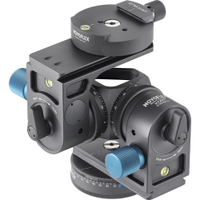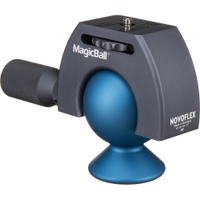Digital Camera World Verdict
Sure enough, the Novoflex Qube Goniometer Head Pro-Kit is based on cube-shaped geared tripod head modules. In this case, you get two of them plus a panoramic base, which I find perfect for making positional movements of my camera with the utmost precision. However, there’s a very high price to be paid at the checkout.
Pros
- +
Superb German build quality
- +
Incredibly precise, super-sturdy
- +
Modular kit options
Cons
- -
Pro kit is quite bulky
- -
Very high purchase price
- -
Requires an L-bracket for portrait orientation shooting
Why you can trust Digital Camera World
I find that geared heads lead the way for precise positional adjustments of my camera when using a tripod. Especially for the likes of landscape and architectural shooting, I can make the finest adjustments to keep my horizon level and ensure that uprights are unerringly upright. The range of adjustment is often far greater than I need for these sorts of scenarios, as well as for shooting extreme close-ups.
The Novoflex Qube Goniometer system aims to take accuracy to the next level but with a more limited overall range. Derived from two Greek words, Wikipedia states that "a goniometer is an instrument that either measures an angle or allows an object to be rotated to a precise angular position". Enough said.
Each ‘Qube’ delivers on this premise, while more advanced kits add greater versatility. They’re billed as ‘designed to enable precise alignment of SLR and mirrorless cameras, technical cameras, bellows devices, complex macro setups, binoculars, telescopes, and rangefinders’. That’s certainly a wide remit but I think they’re best suited to high-precision macro shooting and for using really long, hefty telephoto lenses, where tiny positional adjustments can make a big difference. The kits are very expensive to buy but aim their sights on being among the best geared tripod heads in the business.
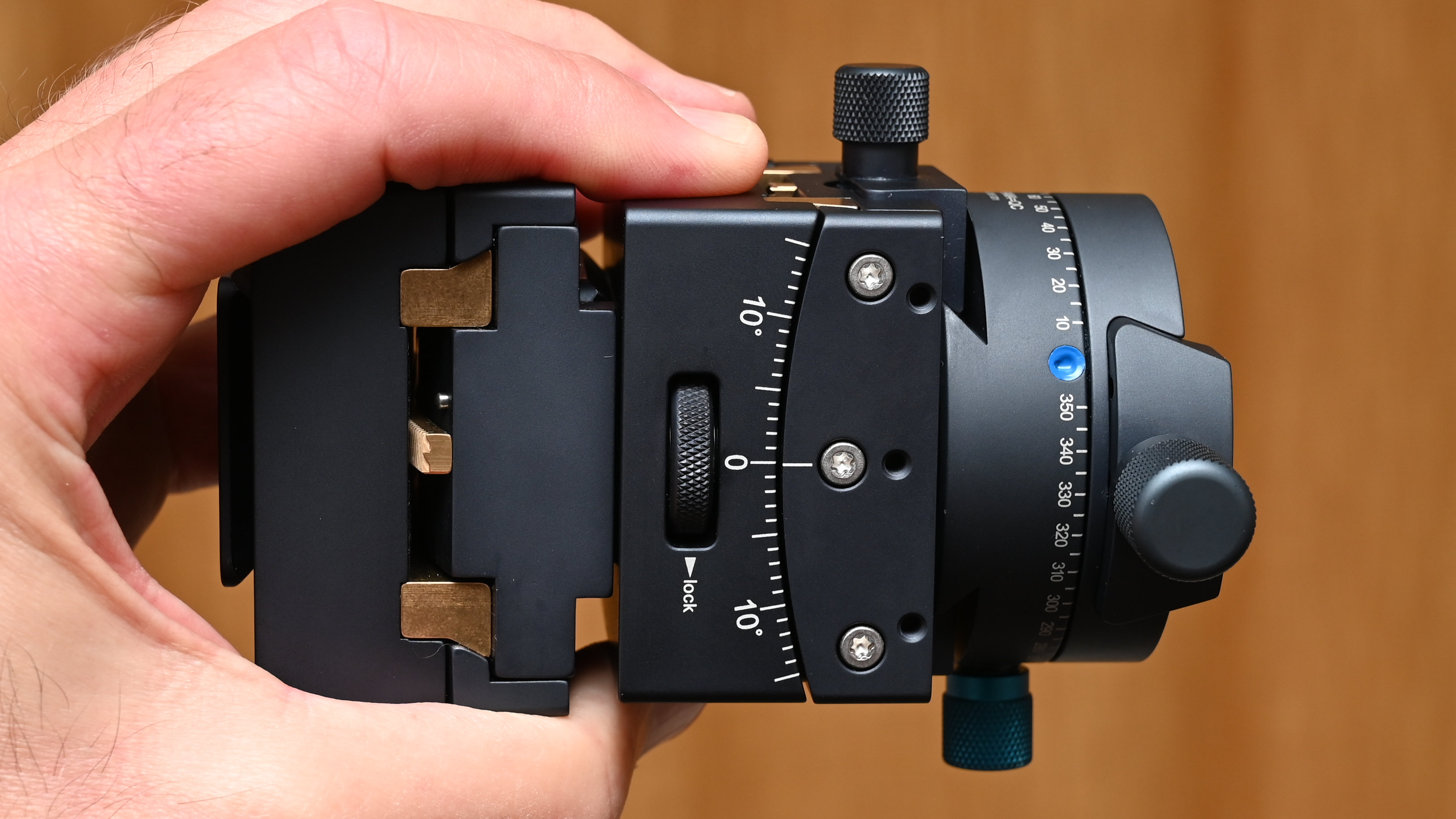
Novoflex Qube: Specifications
| Head type | Geared tripod head |
| Camera mount thread | 1/4" / 3/8" |
| Maximum payload | 10kg / 22.05lb |
| Height | 12.5cm / 4.92" |
| Length | 7.5cm / 2.95" |
| Width | 8.5cm / 3.35" |
| Weight | 1.21kg / 2.67lb |
Novoflex Qube: Price
Novoflex has been making top-end photographic and cinematic accessories for more than 70 years. While many long-established big names in the business, and most new wannabes, have manufacturing plants in China and other far-eastern countries, Novoflex products are still designed and built in Germany. Naturally, Germany has long had a particularly strong reputation for engineering excellence, bit it tends to come with high price tags.
There’s no exception here, as the ‘basic’ singular Novoflex Goniometer Head Qube costs $949 / £660. As its name suggests, the Novoflex Goniometer Head Qube Duo-Kit doubles up on heads and comes in at $1,559 / £1,100. The top-end and most versatile Novoflex Goniometer Head Qube Pro-Kit comprises two modular Qube heads and adds a Panorama-C panoramic base, with a purchase price of $1,799 / £1,250. As they say, you pay your money and take your choice, so let’s see what each kit has to offer...
Novoflex Qube: Design & Handling
Strong and robust, the Qube has a weighty maximum payload rating of 10kg / 22.05lb, which should cater to pretty much any combination of camera body and lens that you want to place on it. Qube by name, cube by nature, the standard item looks like a square block of metal and is reassuringly heavy in the hand. It has an Arca-Swiss style mounting plate at the bottom, with a 3/8” threaded hole at its center for attaching it to a tripod. A 3/8” to 1/4” adapter is also supplied, for attaching to smaller tripod studs. There’s also an Arca-Swiss clamp at the top, for attaching a camera via a quick-release plate (not supplied) or a second Qube – more on that later.
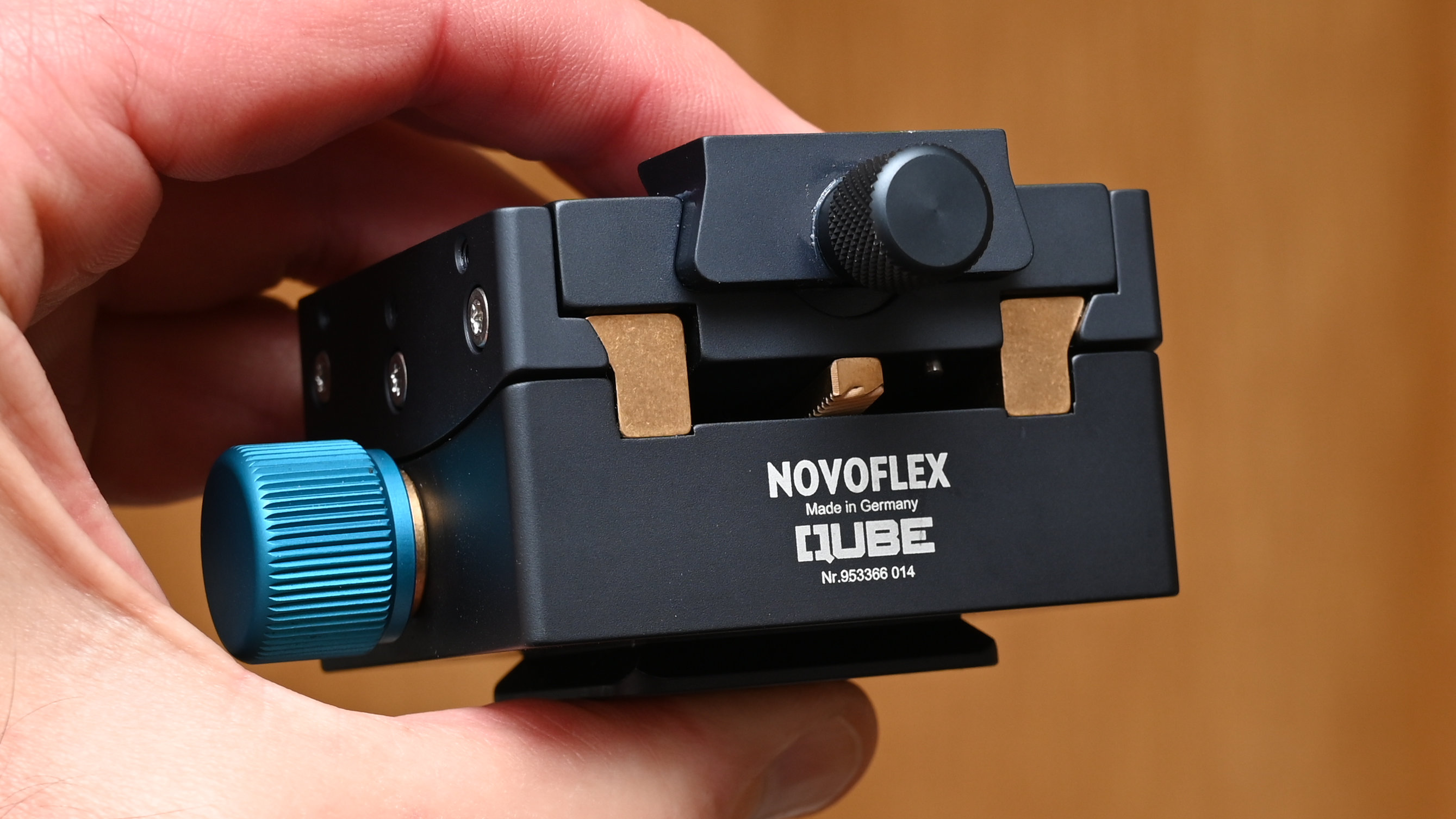
The upper and lower halves of the Qube are connected by a geared brass driving mechanism. This enables up to +/-15 degrees of angular shift. Depending on which way around you fix your camera to the head, you’ll therefore get either 30 degrees of overall movement from side to side, or from front to back – but not both. For angular shift in both planes, enabling both tilt and swivel movements, you need two cubes connected together, one on top of the other. That’s the idea behind the Duo-Kit.
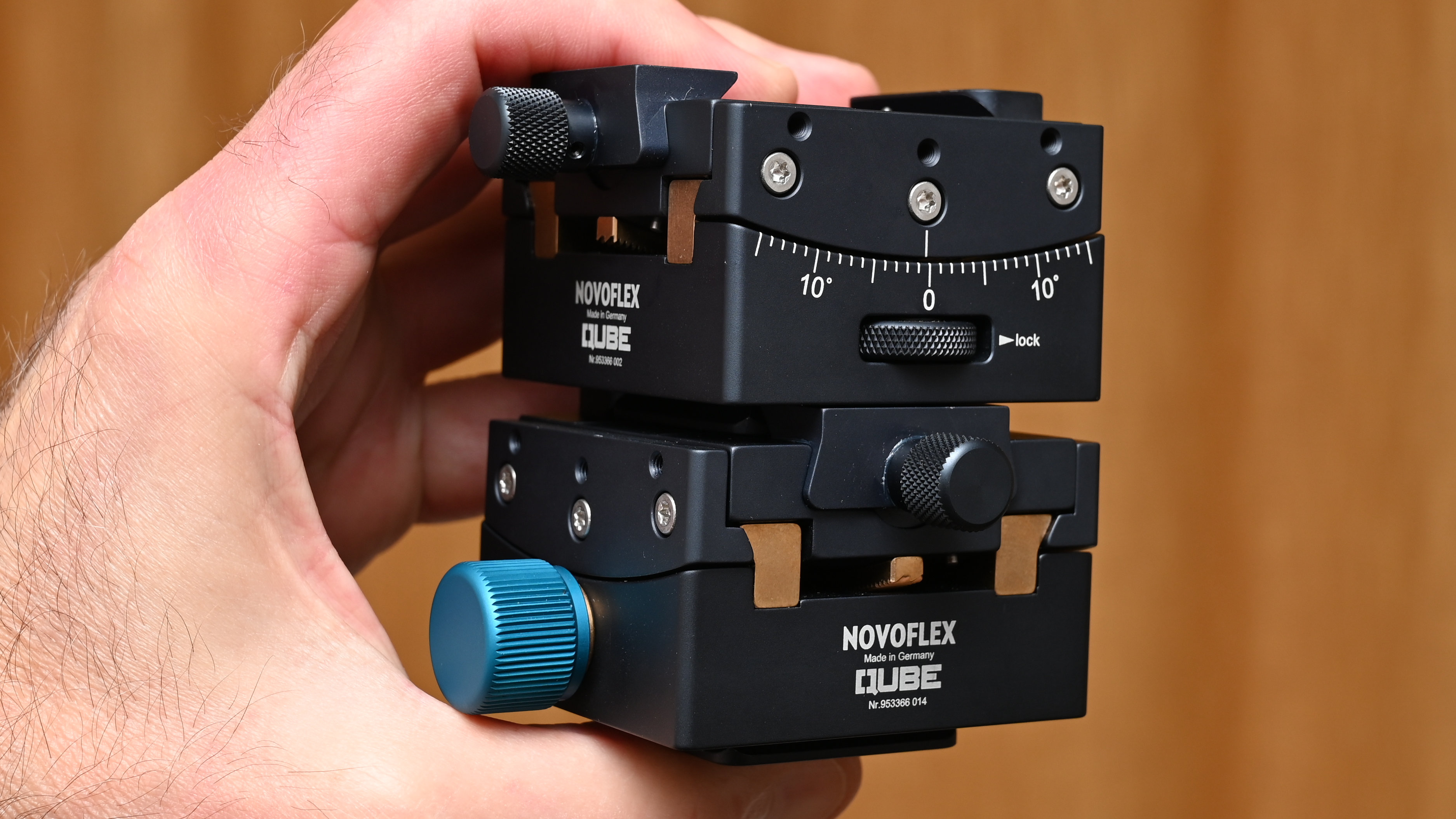
Making positional adjustments to the Qube is very straightforward. There’s a locking thumbwheel that needs to be loosened to enable adjustments and tightened again to lock the upper section in place. Adjustments themselves are made by turning a blue knurled knob, which enables incredibly fine and precise movements with excellent tactile feedback. A calibrated scale on the side of the Qube is marked in single-degree increments, and there’s quite a distance between each and every degree.
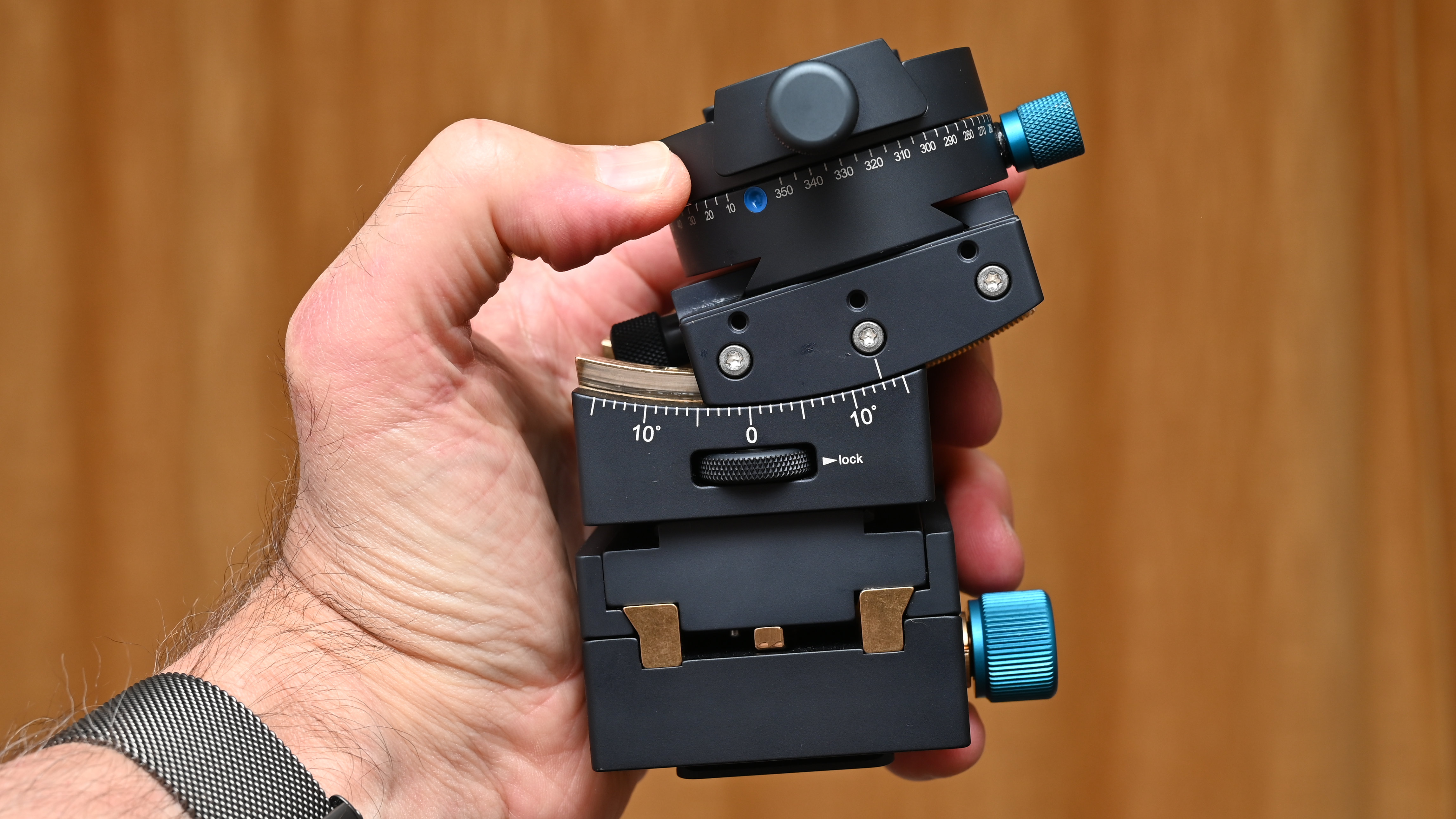
So far so good but what if you also want to be able to make rotational adjustments to the camera’s position? That’s where the premium Pro-Kit comes to the fore. It’s based on the same dual Qube combination as the Duo-Kit, but also adds a Panorama-C panoramic base. This enables a full 360-degree lateral rotation of the camera, covering off the remainder of the tilt, swivel, and pan trilogy. The panoramic base again enables very precise adjustments, this time with a calibrated scale marked in 5-degree increments and larger 10-degree numbered steps.
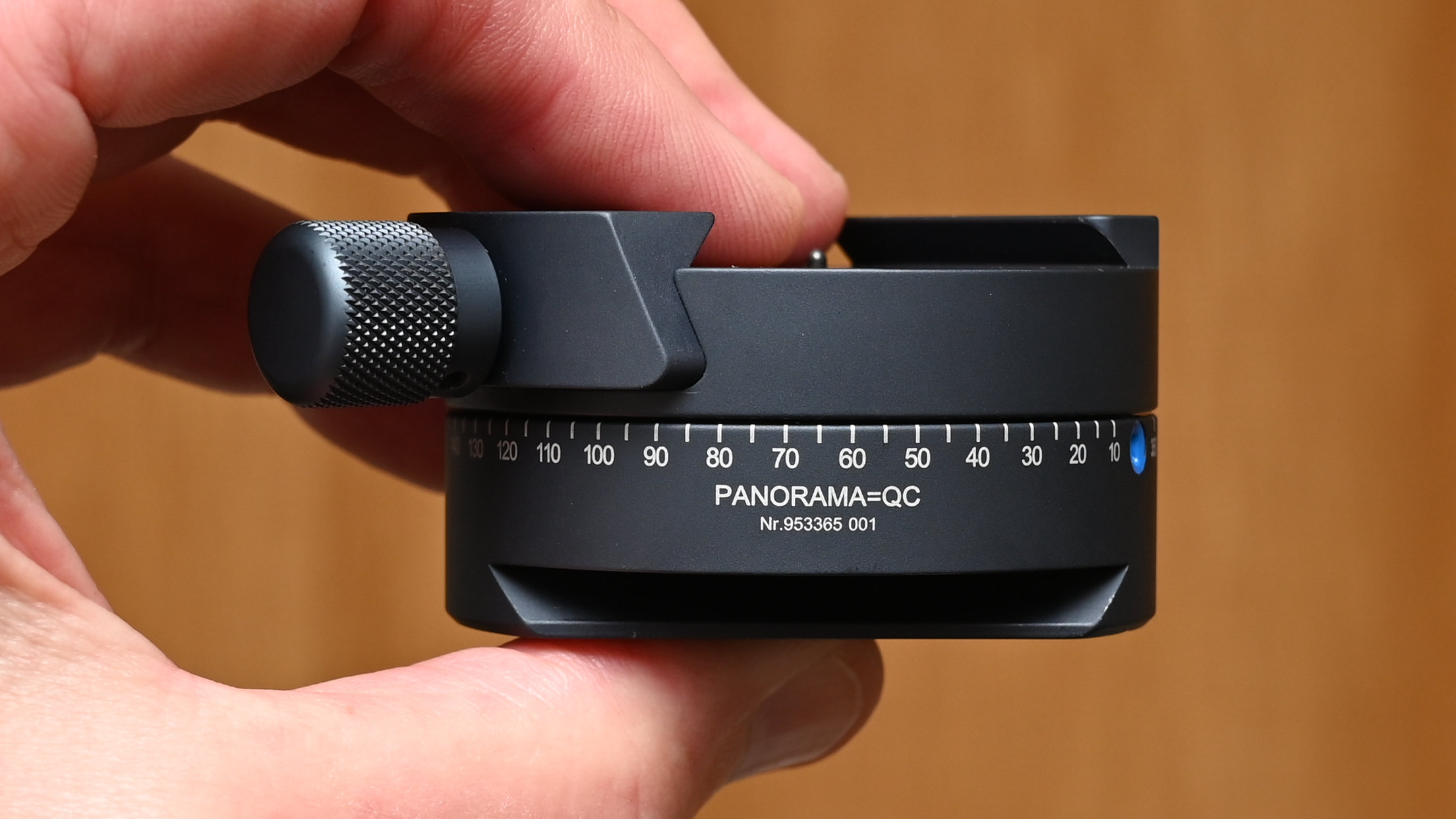
Like the Qube itself, the panoramic base has an Arca-Swiss profile on top and bottom. The top includes a clamp mechanism and bubble level, whereas the bottom has a 3/8” socket at the center, complete with a 3/8” to ¼” thread adapter. With the word ‘base’ involved, it might seem natural to attach the panoramic base to the tripod, with one or two Qube modules stacked on top of it.
There’s a better way though. Mount the panoramic base on top, above the Qube modules, and with the camera level on the head, it’ll stay level throughout any and all panning adjustments, even if the tripod legs aren’t properly leveled. That can be a real bonus for keeping everything level when panning during video capture, or for shooting a sequence of panned stills to stitch into a panoramic image.
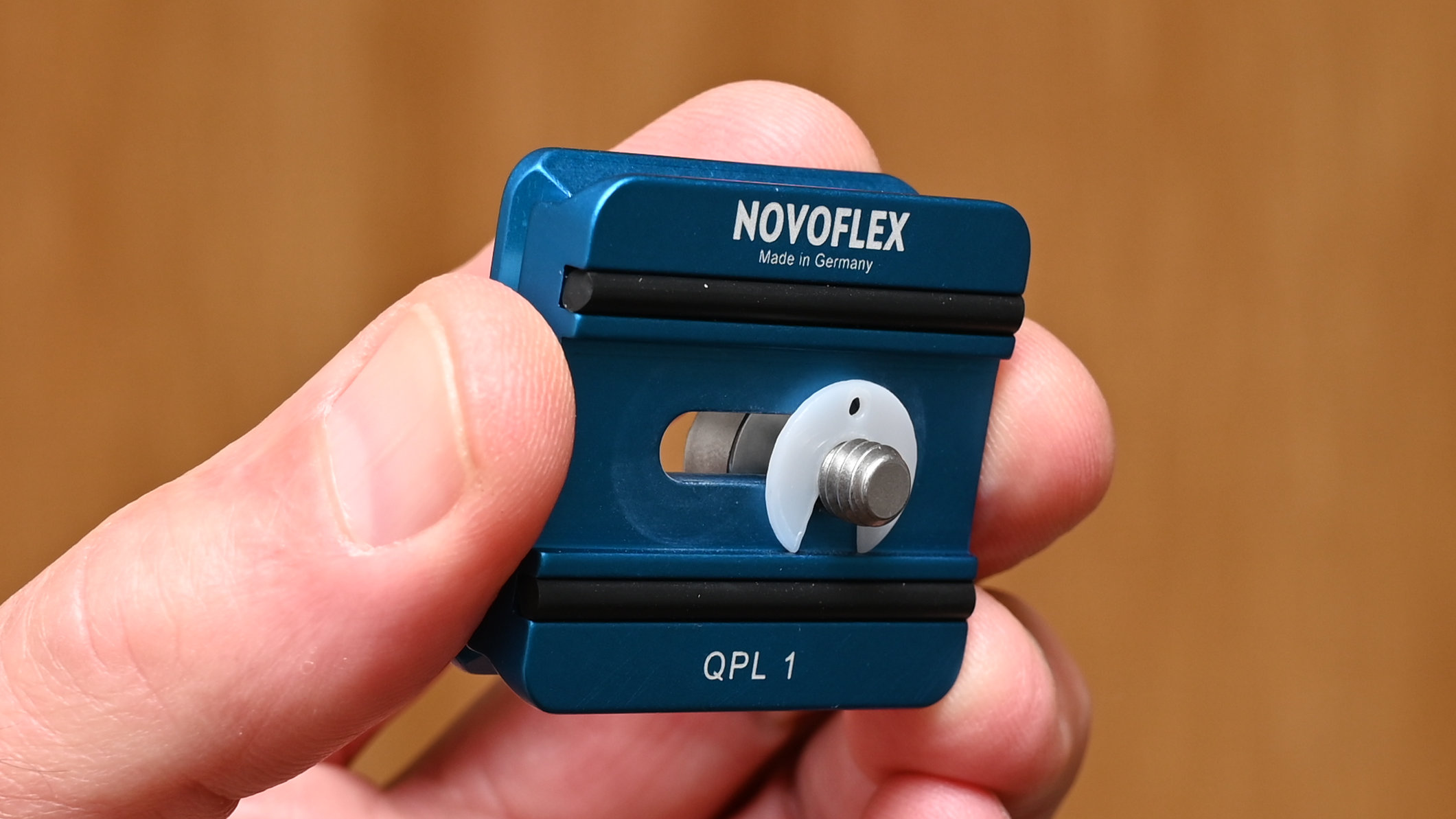
Novoflex Qube: Performance
The Pro-Kit gives you everything from tilt and swivel adjustments to full 360-degree panning. Well, almost everything. The +/-15 degree limit on the Qube adjustments means that you’re limited to shooting at fairly shallow angles upwards or downwards. It also means that if you want to shoot with the camera in portrait (upright) orientation, you’ll need to use an L-bracket, unless you’re using a large lens that has a tripod mounting ring.
However, the nuts and bolts performance of the Qube kits is excellent. True to their promise, they enable ultra-fine and incredibly precise adjustments. Using one or two Qube units plus a panoramic base, sturdiness, and resistance to unwanted flexing or vibration are absolutely exceptional. I found no degradation in performance when connecting two or all three modules together, compared with using a single Qube on its own. That’s always a challenge for any ‘modular’ system with separate components that connect together.
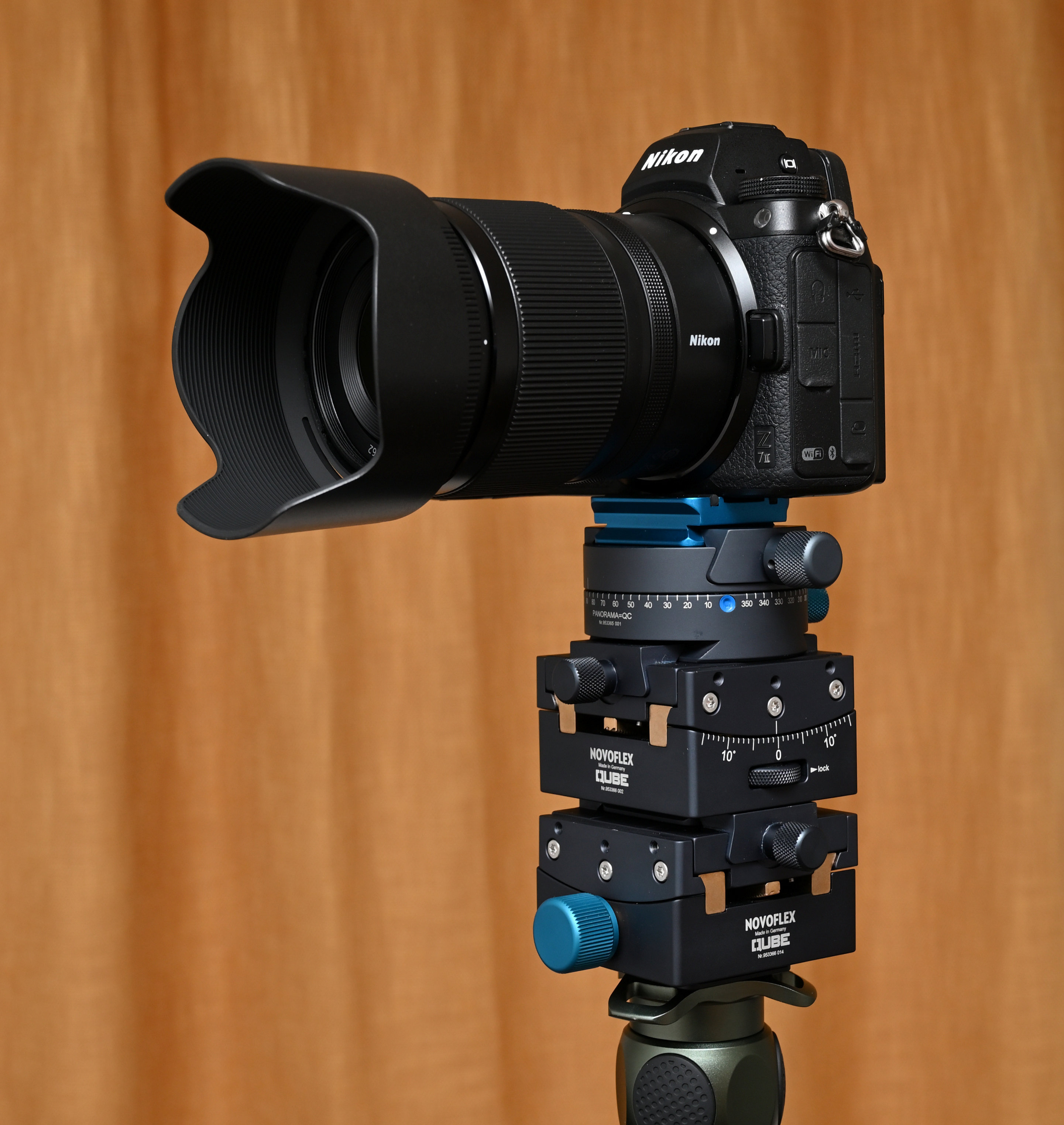
In practical terms, the Qube system is quick and easy to use. The controls are intuitive and simply work brilliantly well. The brass geared track and its connected parts pay dividends in smoothness and high-end feel, while the roller bearings in the panoramic base do a similarly superb job of ensuring a really fluid feel during panning.
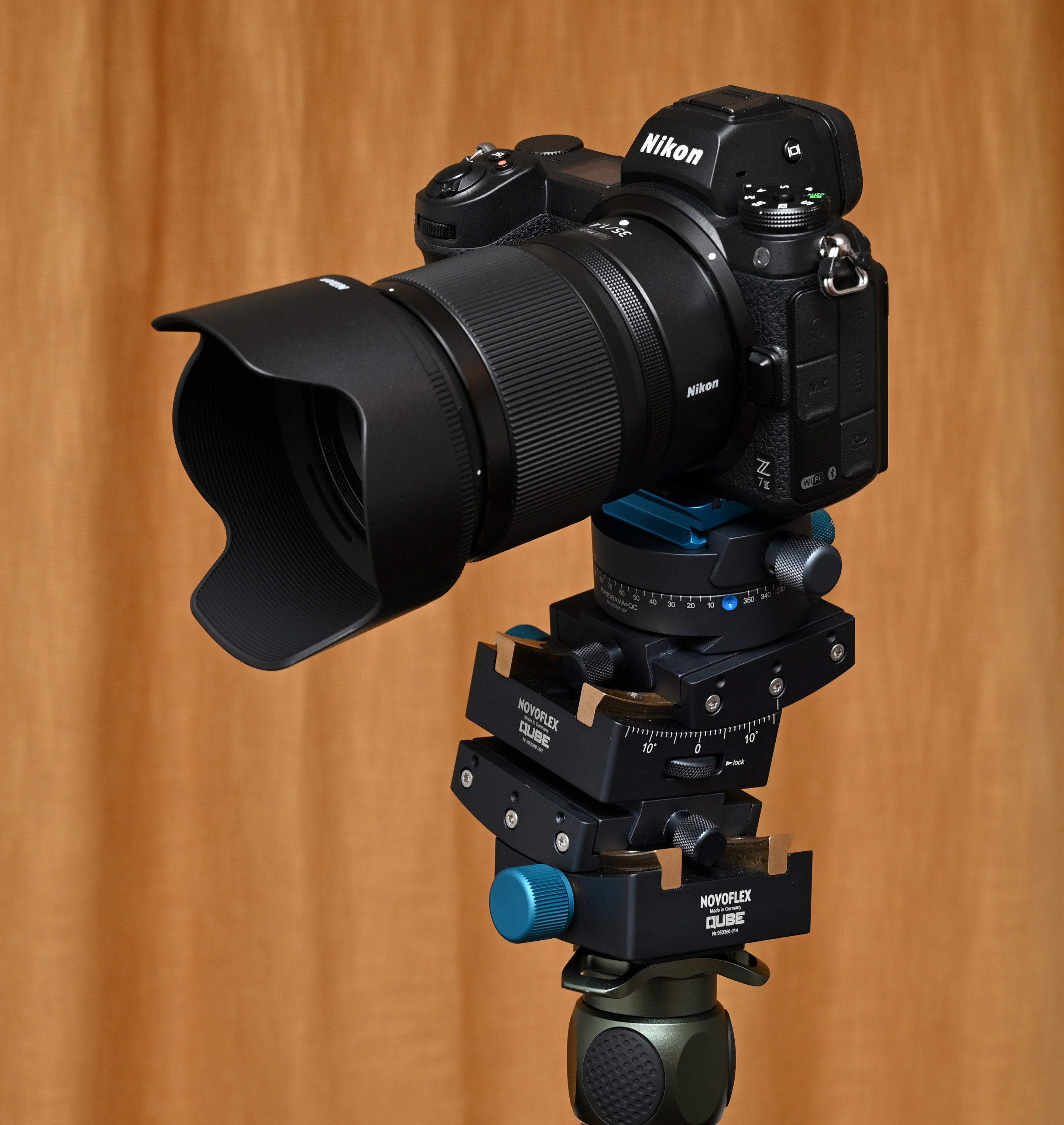
Novoflex Qube: Verdict
I love the incredible precision and ultra-fine control that’s delivered by the Novoflex Qube Goniometer Head Pro-Kit. Out of the three options, I’d definitely go for this range-topping kit that includes two Qube modules plus the panoramic base. It gives much greater versatility than the kits that comprise one or two Qube modules on their own, enabling full tilt, swivel, and panoramic adjustments.
I’ve found that performance is superb, not only for stills but also for effectively leveling the panoramic base when shooting video – competing with some of the very finest video leveling systems in this respect. The only thing I’m not so keen on is the very high selling price which, for me at least, puts the Pro-Kit somewhat beyond my budget for a tripod head. And I’m guessing I’m not the only one.
| Features | For a micro-precision geared head, the Pro Kit is rich in smart features. | ★★★★★ |
| Design | The modular design works really well, making it a multi-purpose tool. | ★★★★★ |
| Performance | Superb build quality translates into rock-solid performance. | ★★★★★ |
| Value | It feels like it’s built to last a lifetime but the price is still hard to swallow. | ★★★ |
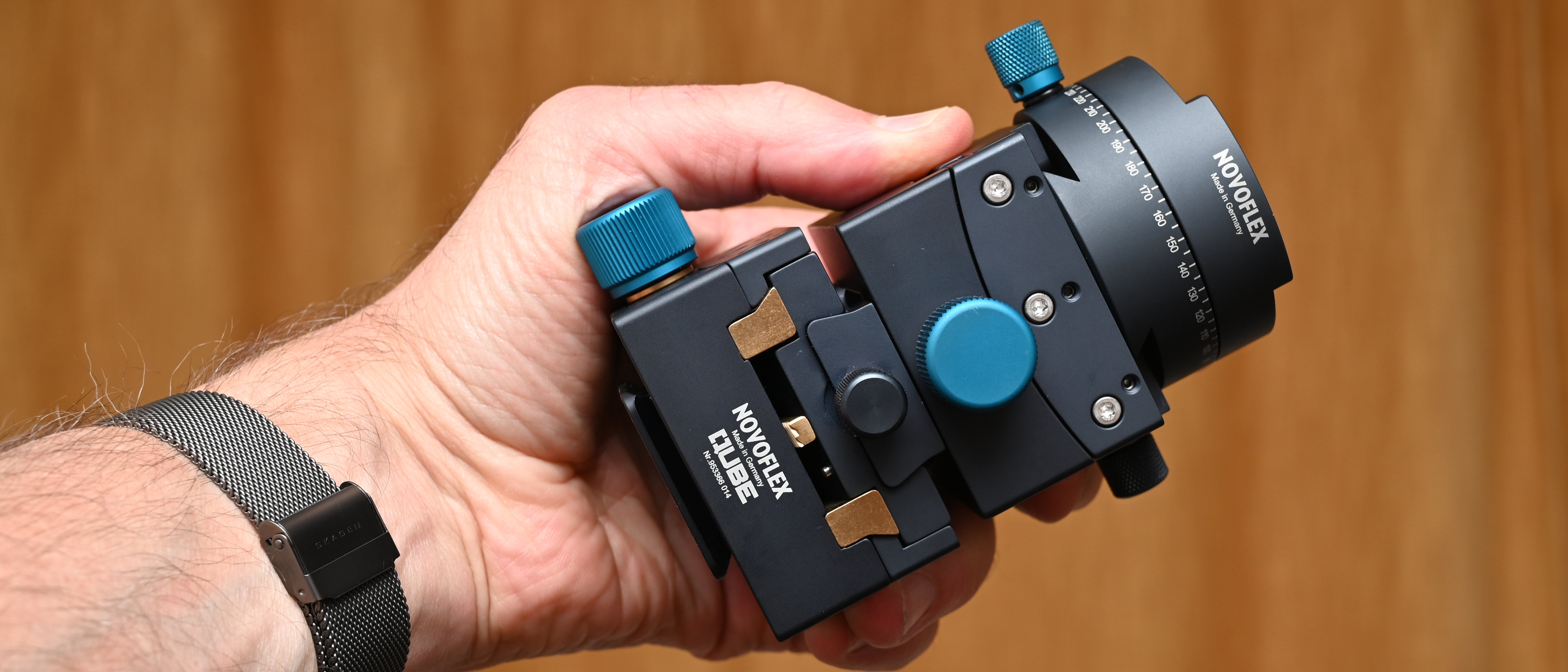
Should you buy the Novoflex Qube?
✅ Buy this...
- You want a geared head that enables the finest micro-adjustments and is happy to pay richly for the privilege.
- You want a geared head that works equally well as the ultimate leveling tool for video and sequential stills for stitching into panoramas.
🚫 Don't buy this...
- You want a greater range of tilt and swivel than the 30 degrees of movement available from this kit, which also rules out portrait orientation shooting without an L-bracket.
- You’d rather have a more conventional, one-piece geared head that’s typically very much less expensive to buy.
Alternatives
The Novoflex KOPF2 Geared Head Starter Kit is similarly well-engineered by the same German company, and is even more expensive to buy, but has a full range of 90-degree tilt and swivel movements.
Fancy having a ball instead? The Novoflex MagicBall puts a novel twist on conventional ball heads and delivers really sturdy support. It’s comparatively inexpensive to buy but still rather pricey for a ball head.
Matthew Richards is a photographer and journalist who has spent years using and reviewing all manner of photo gear. He is Digital Camera World's principal lens reviewer – and has tested more primes and zooms than most people have had hot dinners!
His expertise with equipment doesn’t end there, though. He is also an encyclopedia when it comes to all manner of cameras, camera holsters and bags, flashguns, tripods and heads, printers, papers and inks, and just about anything imaging-related.
In an earlier life he was a broadcast engineer at the BBC, as well as a former editor of PC Guide.

